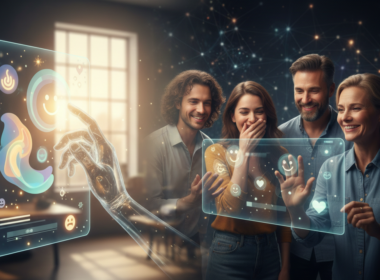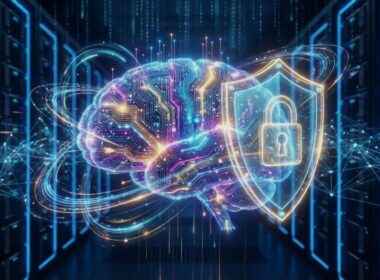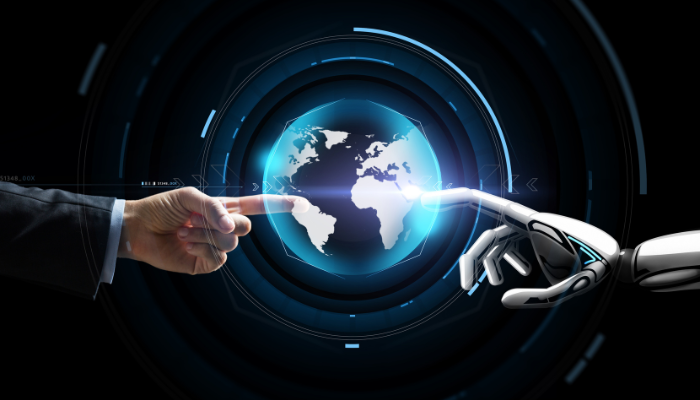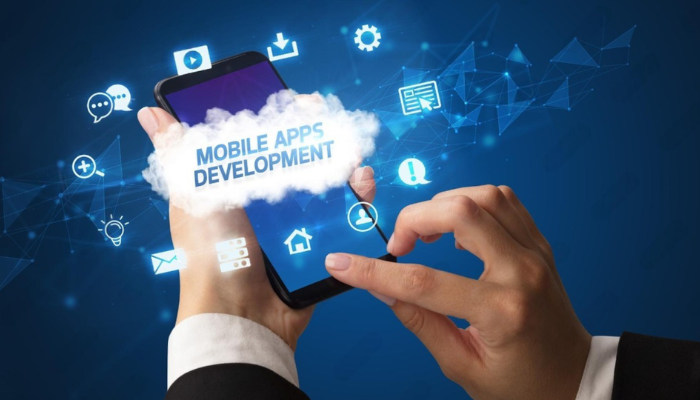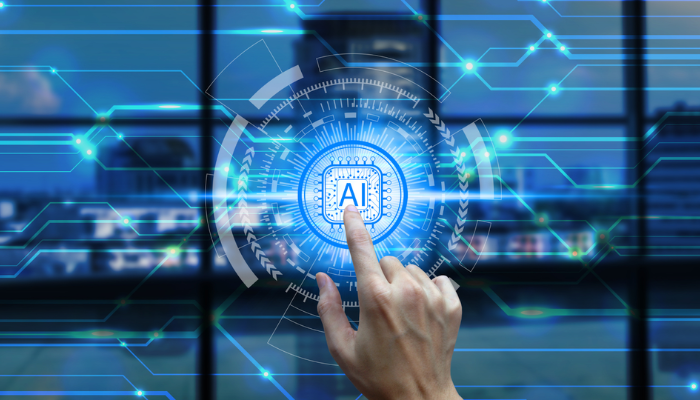SMEs are constantly battling inefficiencies, rising operational costs, and the need for faster decision-making. As businesses strive to stay competitive, AI technologies have evolved to a point where machines can not only process information but also think, create, and even simulate emotions.
This raises an important question: How does artificial intelligence compare to human intelligence, and can it help address the challenges faced by SMEs?
Well, it’s no longer just a topic for experts; it’s something that impacts all businesses like yours. Moreover, the ongoing debate of AI vs human intelligence isn’t just theoretical; it’s shaping industries such as healthcare, retail, finance, etc. For instance, AI is expected to add $15.7 trillion to the global GDP by 2030, showcasing its growing influence.
In this blog, you’ll come across the key differences and similarities between the two, explore how they complement each other, and understand the future of AI-human interaction.
TL;DR – Key Takeaways
- Differences: AI automates data-driven tasks at high speed, while human intelligence excels in creativity, emotional understanding, and complex problem-solving.
- Similarities: Both AI and humans recognize patterns and solve problems using past data or experiences.
- AI Enhances Human Abilities: AI handles repetitive tasks, enabling humans to focus on strategic, creative, and high-value activities.
- Real-World AI Applications: AI solutions help industries like healthcare (predicting health risks), retail (personalized recommendations), and logistics (predicting delivery delays).
What is Human Intelligence?
A unique combination of genetics, upbringing, and exposure to various situations and environments shapes human intelligence (HI). It is fundamentally driven by an individual’s ability to learn from experiences and apply newly acquired information to shape and handle their environment.
HI includes a broad range of cognitive abilities such as problem-solving, critical thinking, memory recall, and emotional intelligence. These enable individuals to perceive, understand, reason, and solve problems.
For instance, in business, a leader’s ability to make strategic decisions, analyze market trends, and adapt to changing conditions relies on their human intelligence.
To understand how this compares to AI, let’s first define what artificial intelligence means.
What is Artificial Intelligence?
Artificial Intelligence (AI) is the ability of machines to simulate human intelligence processes, such as problem-solving, learning, perception, and decision-making.
By utilizing algorithms, AI enables machines to perform tasks that typically require human-like cognitive functions. These range from simple tasks, such as data entry and automated responses in customer service, to highly complex operations, like predictive analytics for financial forecasting.
For example, in industries such as healthcare and finance, AI is being increasingly utilized for predictive analytics, enabling businesses to make data-driven decisions more quickly and with greater accuracy. In manufacturing, AI-powered robots are simplifying production lines, while in logistics, AI enhances route optimization to improve delivery times and reduce costs.
Also Read: Demystifying Artificial Intelligence, Machine Learning, and the Use of Statistics
With a clear understanding of artificial intelligence, let’s now examine how it differs from human intelligence.
AI vs Human Intelligence: Key Differences Explained
Human intelligence (HI) and artificial intelligence (AI) differ fundamentally in their approach to learning and decision-making. Typically, humans excel in creativity, imagination, and social understanding, whereas AI generates solutions based on learned patterns but lacks true creative or emotional insight.
Here’s a quick comparison of AI vs Human Intelligence.
| Parameter | Human Intelligence (HI) | Artificial Intelligence (AI) |
| Purpose | To adapt to new situations by combining a wide range of cognitive activities. | To create machines that can perform tasks traditionally requiring human intelligence, such as decision-making and problem-solving. |
| Functionality | Relies on memory, cognitive abilities, and emotional responses to process and evaluate information. | Relies on data processing and algorithmic models to make decisions and perform tasks. |
| Main Components | Reasoning, Perception, Creativity, Emotional intelligence, Social intelligence | Machine learning (ML), Deep Learning (DL), Natural language processing (NLP), Computer vision |
| Origin & Evolution | A combination of genetics, upbringing, and experiences shapes HI. It evolves through learning and adaptation to new circumstances. | AI’s evolution began with early contributions from theorists like Norbert Wiener. |
| Decision Making | Influenced by emotions, context, and subjective factors, making them complex and layered. | Objective decisions based purely on data, evaluating facts with no emotional or subjective influence. |
| Operating Speed | Slow and may rely on intuition or emotional context in decision-making. | Operates at a much faster pace, processing vast amounts of data in a short time and providing solutions much quicker than humans. |
| Learning Type | One-shot learning: Humans can understand new concepts from a single or a few experiences. | Multishot learning: AI requires a vast number of examples to learn effectively. |
| Perfection & Accuracy | Prone to errors, often making mistakes due to emotional biases or fatigue. | Has the ability to deliver accurate results based on updated prompts and guidelines consistently. |
| Adaptability | Can adapt quickly to new situations, adjusting perspectives and learning from experiences. | Takes longer to adapt to changes, often requiring reprogramming or updates to handle new conditions or unexpected scenarios. |
| Sensory Integration | Can integrate information from all senses to form a complete understanding of the environment. | AI, although advanced in its use in autonomous vehicles, still struggles with fully integrating multisensory inputs to make human-like decisions. |
| Creativity & Innovation | Possess imagination and creativity to generate ideas, solve problems uniquely, and express artistic visions. | Can generate ideas based on previous data patterns, but lacks true creativity. |
While artificial intelligence and human intelligence have key differences, they also share several remarkable similarities. Let’s explore them next.
Significant Similarities Between AI and Human Intelligence
AI and human intelligence share key parallels in pattern recognition and goal-oriented problem-solving. Both can identify patterns, whether in faces, speech, or data, and utilize these insights to make informed decisions. Additionally, both AI and humans excel in solving problems by breaking them down into manageable steps.
Here’s a quick breakdown of these shared abilities:
1. Pattern Recognition Abilities
Humans can recognize patterns in daily life, such as identifying faces, understanding speech, and detecting trends in data. AI, on the other hand, is trained to identify patterns in large datasets, such as recognizing objects in images or detecting fraudulent transactions.
Example: AI in banking uses transaction patterns to detect anomalies, just like a person would notice an unusual activity in their account.
Pro Tip: Utilizing AI for pattern recognition in industries like retail and healthcare can significantly reduce human error and speed up decision-making.
2. Adaptability and Learning
Humans adapt to new environments and information, continuously refining their cognitive abilities. Similarly, AI learns from multiple datasets and improves over time, becoming more accurate and efficient.
Example: AI in healthcare utilizes data from patient records to refine diagnostic predictions, much like a doctor learns new treatment methods through experience and training.
Read our blog on Artificial Intelligence in Healthcare: Roles, Benefits, and Future for more insights on AI’s impact on the healthcare industry.
Did You Know? Machine learning in agriculture helps farmers predict crop yields and adapt to changing weather patterns.
3. Language Processing and Communication
Humans understand and articulate language fluently through cognitive abilities, whether spoken or written. AI uses natural language processing (NLP) to interpret, understand, and generate human language.
Example: Virtual assistants like Siri and Alexa use NLP to comprehend user commands and respond conversationally.
4. Goal-Oriented Problem Solving
Humans can solve problems by breaking them down into manageable steps, often based on previous experiences and logical reasoning. AI follows goal-oriented algorithms to achieve specific tasks efficiently. Both have the same end goal, i.e., to find a suitable solution for the problem at hand.
Example: AI-powered recommendation engines on streaming platforms like Netflix suggest shows or movies based on your viewing history, just as a friend might recommend a film based on your preferences.
Pro Tip: AI can optimize goal-setting in business. Utilize AI in marketing to personalize ads and content, thereby enhancing engagement and conversion rates.
These similarities highlight the rise of AI, portraying it as a powerful tool that exhibits certain similarities with human intelligence across various industries; however, AI and human intelligence face distinct challenges. Let’s explore them.
Key Limitations of AI vs Human Intelligence
Emotions and biases often influence human intelligence, and it can be hindered by fatigue or limited creative thinking. On the other hand, AI, while efficient and precise, struggles with emotional understanding, relies heavily on large datasets, and lacks self-awareness.
Here are some of the most common challenges faced by human intelligence and AI.
Limitations of Human Intelligence:
- Subjectivity in Decision-Making: Human decisions are frequently influenced by emotions and biases, resulting in subjective judgments.
Example: A manager might promote an employee based on personal relationships rather than performance metrics.
- Fatigue and Distraction: Humans require rest and can become distracted, which impacts their focus and accuracy.
Example: A doctor may overlook key symptoms after a long shift, resulting in a misdiagnosis.
- Creativity Constraints: Personal experiences and cognitive boundaries often limit human creativity.
Example: An artist might struggle to create outside their usual style, while AI can generate endless creative variations.
Limitations of Artificial Intelligence:
- Lack of Emotional Understanding: AI can simulate empathy, but doesn’t understand or feel emotions.
Example: Suppose you’re running an online retail apparel business, and a customer has initiated a return because of a mismatch between the product description on the website and the one received. The deployed AI chatbot on your website might say, “I’m sorry you feel that way,” but it doesn’t truly empathize with the user’s feelings.
- Dependency on Data: AI requires large datasets to function effectively and cannot generalize from minimal examples.
Example: AI facial recognition might fail if it’s not trained on diverse data, unlike humans, who can recognize faces with little exposure.
- Lack of Consciousness: AI lacks self-awareness and cannot reflect on its actions or understand its purpose.
Example: An AI-powered recommendation engine can suggest products based on your customer’s browsing history, but it doesn’t understand why it’s recommending them or how it fits into the broader business strategy.
Facing challenges with inventory management or customer engagement?
Codewave’s AI and Machine Learning consulting services can help you optimize operations, from sales forecasting to personalized recommendations.
Schedule a consultation to discover how our AI and ML expertise can solve your retail challenges and accelerate growth.
While both human intelligence and AI have their limitations, they also have the potential to complement each other in powerful ways. Let’s explore how AI can work alongside human intelligence.
How AI Complements Human Intelligence?
Rather than viewing AI and human intelligence as competitors, you must look at them as complementary forces. AI excels in tasks requiring speed, precision, and data analysis, while human intelligence brings creativity, intuition, and ethical judgment. Combining these strengths opens new opportunities for innovation and growth.
Why It Matters for SMEs? For SMEs, integrating AI with human intelligence can simplify operations and enhance decision-making. AI automates tasks like data entry and customer queries, while humans bring creativity, strategy, and emotional intelligence to customer relationships.
Below, you’ll find some instances where AI and human intelligence work together.
- Collaborative Problem-Solving: AI provides data-driven insights, but human intelligence excels in handling complex situations.
Example: AI in marketing can suggest customer segmentation, while humans can create personalized campaigns that appeal to the emotions and needs of the target audience. - Human-AI Interaction: User-friendly AI systems ensure smooth collaboration between humans and technology, enabling you to work together effectively.
Example: AI chatbots can handle routine customer inquiries about order status or product details, allowing your customer service teams to focus on resolving more complex issues, such as returns, refunds, or personalized product recommendations.
- Augmented Intelligence: AI enhances human decision-making by providing valuable data, enabling faster, more informed choices.
Example: AI in retail recommends inventory adjustments, while humans make final decisions based on a broader understanding of the market and demand.
Also Read: AI’s Role in Boosting Operational Efficiency
Note: Responsible AI ensures that technology is used fairly, without bias, and respects privacy. For SMEs, maintaining human oversight is crucial to preventing bias and ensuring ethical AI practices in areas such as hiring and customer privacy.
Want to reduce customer wait times without expanding your team?
Codewave specializes in creating custom AI solutions that complement human intelligence. From automating routine tasks like data entry and customer inquiries to providing 24/7 support via AI chatbots and virtual assistants, we help SMEs enhance efficiency.
Book a call to explore how our AI-powered process automation solutions can strengthen your customer support operations.
As we shift focus from how AI and human intelligence complement each other, it’s essential to consider whether AI will ever fully replace human capabilities.
Will AI Replace Human Intelligence in the Future?
AI excels at automating repetitive, data-driven tasks and making informed decisions. That’s one of the prominent reasons why Wall Street expects to replace 200,000 roles with AI in the next 3 to 5 years. Despite these capabilities, it is unlikely to replace human intelligence completely.
Human skills, such as creativity, critical thinking, and emotional intelligence, are irreplaceable. For instance, in healthcare, AI can analyze medical images, but human doctors provide the empathy and care patients need.
Another question that arises when discussing the possibility of AI replacing humans is, “Can machines truly think?” If thinking means processing information faster, AI has already surpassed human intelligence. However, if it involves emotions, self-awareness, and creativity, AI still has a long way to go.
Therefore, AI will not replace human intelligence; instead, it will enhance it. By utilizing AI to handle repetitive tasks such as data entry, customer inquiries, and inventory management, SMEs can streamline their operations, reduce costs, and increase efficiency.
Example: AI can automate email responses or analyze sales trends, enabling SMEs like yours to allocate resources toward developing new products or expanding marketing efforts.
Now, let’s explore how we can help you integrate AI solutions to drive your business forward.
Why is Codewave the Right Partner for AI and Human Intelligence Collaboration?
For businesses in industries such as healthcare, retail, and logistics, Codewave combines AI with human expertise to address specific challenges, enhance decision-making, and drive innovation. By using AI to automate repetitive tasks and enhance human creativity, we deliver solutions that improve both efficiency and customer satisfaction.
Here’s how we can help:
- AI-Powered Decision Support: Our AI solutions enhance decision-making by integrating predictive analytics, real-time insights, and automation into business workflows. For instance, in healthcare, our developed AI models can analyze patient data to predict health risks, enabling proactive interventions and personalized treatment.
- Customer-Focused AI Solutions: Our AI-powered chatbots and virtual assistants automate routine customer interactions, providing 24/7 support. In retail, for example, AI chatbots handle product inquiries and order tracking, freeing up human agents to manage more complex issues.
- Natural Language Processing (NLP) for Human-Centered Insights: We provide NLP solutions that transform unstructured data, such as customer feedback, emails, and social media posts, into actionable insights. For example, in finance, it enables businesses to quickly analyze customer reviews or claims.
- Personalized User Experiences: Our AI solutions deliver real-time, customized recommendations across various industries, including retail, healthcare, and manufacturing. In e-commerce, our AI-powered engines suggest products based on past purchasing behavior, thereby boosting engagement.
- Data-Driven Predictive Analytics: We offer AI-powered predictive analytics tools that enable SMEs to make proactive decisions by analyzing historical data and forecasting trends. For instance, in logistics, our AI solutions can predict delivery delays based on real-time data, allowing businesses to take preventive action.
Struggling with inefficiencies, rising costs, or stagnant growth? Our AI solutions can help you streamline operations, reduce overhead, and make data-driven decisions to drive business growth.
Explore our portfolio to see how we’ve helped businesses like yours.
Let’s talk. Schedule a call with one of our AI consultants to explore how our customized AI/ML development services can address your specific challenges and improve business outcomes.
FAQs
Question 1: What are the implications of AI on job markets?
AI’s automation capabilities can lead to job displacement in specific sectors, particularly those involving repetitive tasks. However, it also creates opportunities for new roles in AI development, maintenance, and oversight.
Question 2: What is the Turing Test, and does AI pass it?
The Turing Test evaluates a machine’s ability to exhibit intelligent behavior that cannot be distinguished from that of a human. While some AI systems, like OpenAI’s GPT-4.5, have passed versions of the test, they still lack a proper understanding and consciousness.
Question 3: What ethical considerations arise from AI’s capabilities?
AI systems can inherit biases from the data they are trained on, raising ethical concerns in areas such as hiring practices and law enforcement. Additionally, the lack of transparency in AI decision-making processes raises questions about accountability and fairness.
Question 4: What is Moravec’s Paradox?
Moravec’s Paradox highlights that tasks requiring advanced reasoning, such as playing chess or solving complex mathematical problems, are more manageable for AI. However, functions that humans perform effortlessly, such as recognizing faces or passing through a room, are far more challenging for AI.
Question 5: How are agents used in AI?
In AI, agents are systems that perceive their environment, make decisions, and take actions to achieve specific goals. For example, a self-driving car is an AI agent that uses sensors to perceive the road and make driving decisions autonomously, navigating safely without human intervention.
Codewave is a UX first design thinking & digital transformation services company, designing & engineering innovative mobile apps, cloud, & edge solutions.
